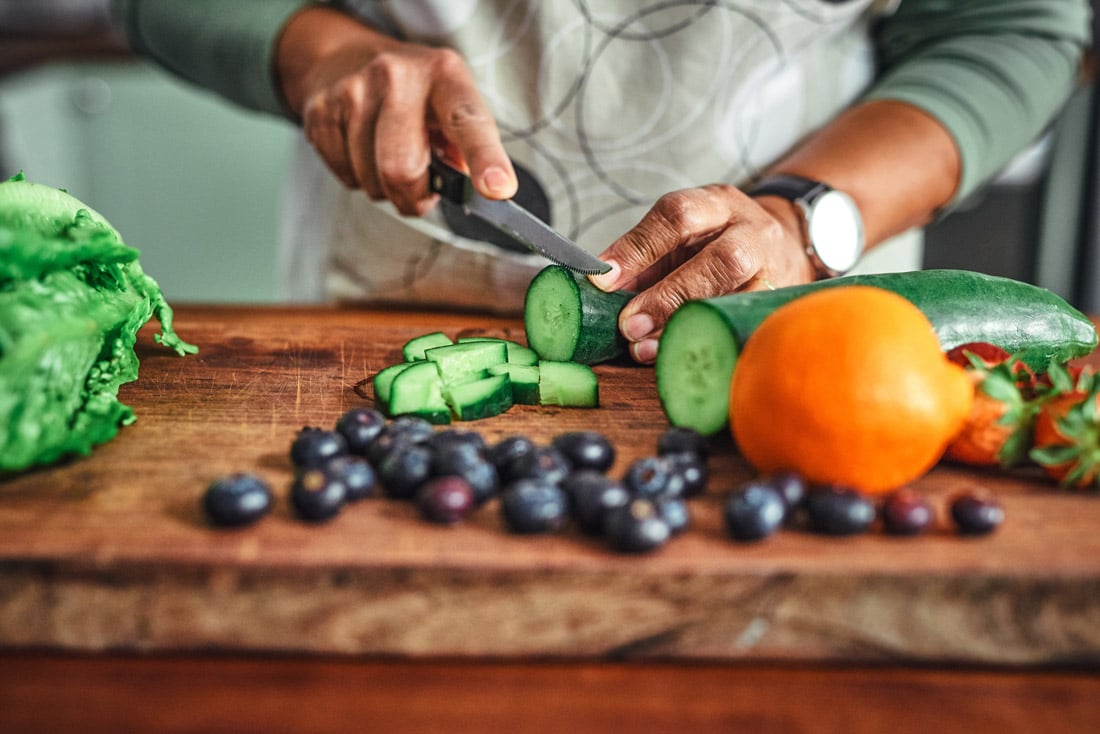Health drives are not always lone undertakings. These initiatives can be a family-wide occurrence
Mums and dads overhauling their diets will understandably want to set a good example for their kids. If they’re preparing healthier meals for themselves, they may as well extend these efforts to the rest of the family in the interest of streamlining costs and shopping logistics. Still, communicating the why of it all matters too.
Of course, some of these efforts aren’t down to raising awareness alone. Last year, it was reported that some families had a high awareness of healthy eating, but their low incomes meant they struggled to afford good food and fulfil healthy eating obligations.
Families may need to overcome a few logistical hurdles to promote healthier foods in their households effectively. Below we’ve listed a few solutions.
Utilise the bulletin board
It might seem like families are more likely to have a group chat than use a bulletin board at home. However, regarding WhatsApp variations, these groups are often touted as one of the five that people wish they could leave most.
Old-school communications might be best. Many food-related items can feature on a family bulletin board. Newspaper clippings on the latest nutrition news can be pinned. Household menus can also feature in a place of prominence, or the rota of which meals shall be prepared on certain days. Other things like shopping lists, requested ingredients, and recipe instructions can also be found here.
Families can create a hub area in their household where each member can learn more about food. The bulletin board can also prompt discussions, where topics from the newspaper and magazine snippets can be talked about and researched further. Ultimately, the bulletin board is a great way to give healthier foods a constant presence in a household.
Send recipes digitally
Recipes can be useful on a bulletin board when they are a final version. Before then, different family members might want some say in how these new meals take shape.
Of course, sending files back and forth between family members can get complicated if everyone is using different software. Fortunately, Acrobat is the best conversion tool any family could hope to use. Files can be converted from PDF to Word and more, allowing all users to share and make edits to documents, in this case recipes, with minimal fuss. Much of the health food guidance found online can be in particular formats too, so having a way around that exclusivity is a bonus.
Families can finalise and print out all their digital food-related creations, but they can also create backups. It’s a good idea to have copies so that records can be kept and edits are tracked. Few things are contested over quite like food can be, so if everyone has a way to collaborate and keep things orderly, fewer tensions in the household will surface.
Discuss family traditions
Some families have very specific thoughts and feelings about food. Certain dishes or even hints of key ingredients can unlock profound feelings and memories, especially regarding tradition.
Depending on a family’s traditions, a drive toward healthier eating may threaten to usurp traditions and dishes they might harbour dear. As silly as it might sound to some, if these issues aren’t discussed with tact and sensitivity, it can lead to rather intensive arguments.
After all, some recipes can be passed down through generations. They may even be cherished as much as any final message a loved one has left before passing. Others may have religious and cultural connotations, meaning certain family members cannot just give up the dish on a whim or at all.
Consequently, these matters should be debated with as much seriousness as the context demands. It might be that compromises can be reached if everyone pulls together and is determined to help one another. In the end, one can promote healthy eating in a family without imposing a new rule of law all must adhere to.
Take foodie field trips
Promoting healthy foods in a family-wide capacity can be a lot easier when all members are influenced by their surroundings. A foodie field trip may be just what everyone needs to feel inspired.
For example, families can visit farms, orchards, gardens or even restaurants which are rated for their excellence in providing healthier meals. Plenty of information and experiences can be gleaned from these escapades. Everything from how animals are treated to the produce picking process can be explored here.
Hands-on experiences can remove the abstract thinking about healthy foods and help families roll up their sleeves and get involved. Moreover, it’s a shared experience, so if any tensions and disagreements occur over healthier eating plans, these encounters may help families find more common ground and unity.
The insights here can be life-changing. For instance, shopping with more health-conscious brands is just one lifestyle change that can come from all this. Families can find a whole new lease on life through their desire to promote healthier foods in their own households.
Refer to government resources
Promoting healthy foods is more than just a household quirk. It can also be a point of order, to an extent.
After all, more parents were found to give their children unhealthy snacks during the pandemic. In response, the government launched a new multimedia campaign to help parents improve their children’s diets efficiently. A new NHS food scanner app accompanied these proceedings too.
Families can now scan the product barcodes found in their local shops. After that, the app will suggest healthier alternatives, so the user is more informed on what to buy on their return. ‘Good Choice’ badges also provide positive reinforcement, illustrating positive progress.
Families can promote healthy foods in their households more effectively by aligning themselves with these efforts. It can convey a sense of legitimacy in their efforts and show kids that rules are being enforced for better reasons than ‘because I said so’. Everything is given a greater sense of purpose, and it’s worth keeping updated and following through on these types of campaigns.
Keep encouraging involvement
Every family member needs to be interested in promoting healthier foods in their lives. It should not be a regime only a mother or father is interested in implementing.
What do the kids think of the meals? Have they eaten anything at a friend’s house they prefer? Do they suggest adding more variety to what’s on offer? Are they interested in preparing and cooking meals themselves? The answers to these questions can help them invest more in healthier foods.
It’s not just kids that should be answering these questions. Every family member has opinions that should be expressed openly and honestly. When everybody feels comfortable partaking, a more well-rounded approach can be taken toward promoting healthier foods in a family.
Furthermore, the science, cost, and availability of healthier foods are always changing. Families should try not to aim for any ‘end point’ with these efforts. While bulletin boards and government resources can provide timely updates, a family’s approach to better diets should occasionally be under review.
Conclusion
Families can promote healthy foods in their households in many ways. There’s more to be done than making a few subtle dietary changes too. Big questions need to be answered about where food comes from, how family members can collaborate on recipes, and how the government can help. Hopefully, families won’t shy away from these enquiries and strive to make bold changes in their lives.







